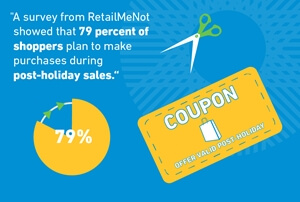Artificial intelligence (AI) is no longer the province of science fiction: it’s here, and it can be leveraged by your supply chain to transform the way your company sources materials and delivers finished products.
For many companies, AI and cognitive computing are becoming necessities in their supply chain operations, as these capabilities can help them overcome significant barriers to success.
First, we collect a plethora of data in our supply chains, but often, we miss important opportunities for cost savings and efficiency because we aren’t using that data effectively.
AI and Cognitive Capabilities
Additionally, artificial intelligence and cognitive capabilities in the supply chain become even more important as Baby Boomers—with their wealth of supply chain knowledge—retire. The new Millennial workforce is packed with tech-savvy workers, but they often do not have the supply chain experience of their senior counterparts, nor do they tend to stay in one position for decades, as previous generations did.
Globalization also presents new challenges to the supply chain. As companies continue to grow, they generate and collect even more data, implement more policies and processes, and add many new employees, suppliers, customers, and locations. Consequently, they struggle with analyzing all of this data, bringing new supply chain employees up to speed on policies and best practices, deciding what actions to take when issues arise, and getting relevant insights into the right hands at the right time.
While AI and cognitive capabilities can help companies overcome these challenges and many others, they can also help companies improve—even transform—their supply chains. Let’s explore how.
What The Top Performers Think About AI and Cognitive
According to a survey of over 700 companies by the IBM Institute for Business Value, the top-performing organizations recognize the value of artificial intelligence and cognitive computing. Eighty-eight percent of these outperformers see AI as inevitable, and 95 percent see it as central to innovation. More than half of them plan to invest in the technology to make this happen.
With the data gathered from other emerging technologies like IoT, along with predictive and prescriptive analytics, AI and cognitive capabilities can help predict demand, assist with scheduling, and determine how to overcome supply constraints. They can also help to allocate resources—including human resources—based upon anticipated demand. In fact, out of the same outperforming companies surveyed by IBM, 92 percent say that AI and cognitive technologies will enhance production planning performance.
What Cognitive Can Do
Shifting demand requires knowing which orders to place on the line and what supplies are needed. Poor communication between teams often makes it difficult to align demand, orders, and supply. Cognitive capabilities can present real-time, relevant information to each team and team members to ensure they see the changes in supply and demand. They can also provide context to this information to facilitate better decision-making.
Cognitive solutions, such as those powered by IBM Watson, can think, reason, and learn by analyzing structured and unstructured data, business rules, and actions to provide almost instantaneous summaries and analyses to equip business users and decision-makers.
Say, for example, your supply chain experienced a significant disruption due to a natural disaster. The cognitive capabilities in the IBM Sterling Supply Chain solution used the data it aggregated to analyze how your team responded—and, in fact, it was a successful outcome. This information, in turn, is now used by the system to inform new hires on the procedures for handling supply chain disruptions.
IBM Supply Chain Solutions
This is not limited to historical data. Cognitive solutions like IBM Supply Chain Insights can collect and analyze a wide variety of supplier data, and provide recommendations that can streamline your supply chain. Imagine being able to view all supplier relationships and contracts in a single location. The solution can aggregate and analyze data from your current suppliers—as well as alternative suppliers—from both structured and unstructured data sources (such as news articles and social feeds). Based on this data, the cognitive solution makes recommendations on how to renegotiate supplier contracts or advise which new suppliers can help you save money and speed time to market.
Cognitive supply chain solutions can also facilitate supply chain optimization on an ongoing basis. For example, they can provide delivery cost and performance improvement recommendations based on carrier options, rates, and statistics.
More advanced touchpoints that include Internet of Things devices and RFID can yield real-time insights into orders and sales items—right down to the individual retail location carrying a specific item.
Cognitive solutions can also help employees and decision makers make faster, more confident decisions.
Cognitive Supply Chain
For example, imagine if you receive an automated alert from the system that tells you that a shipment of coils is delayed. The cognitive supply chain solution also provides you information about options that help you address this issue, along with predicted outcomes. It tells you that pushing back production will result in needing to cancel 20 percent of existing orders, but ordering from these alternate suppliers will enable you to meet the demand for a slightly increased cost. Based on the information provided, you can ensure production stays on schedule, thanks to these timely insights.
The future of supply chain management incorporates artificial intelligence and cognitive capabilities, transforming the way you do business. Instead of being reactive, you’ll be proactive. We’ll explore this in more detail in future posts.


